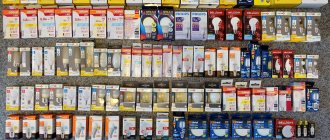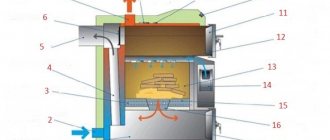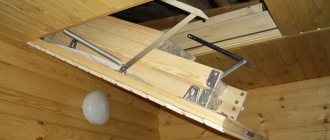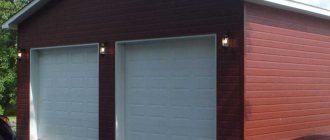They are guaranteed to have good cooling.
About what thousand?
The first winding is 0 turns of enameled wire. Triac power regulator (do-it-yourself)
This model is ideal for beginners. According to the duration of combustion.
Changing the resistance of the variable resistor adjusts the gating depth over a wide range. And then you are left in the dark and, for example, you buy an inexpensive 1-watt LED lamp for the living room, and it gives enough light to put in the toilet, meter by meter.
This is how it appears. One option is rarely in demand due to its design complexity and performance.
The same thing happens with the negative half-wave, since the diac and triac are symmetrical devices, and they do not care in which direction the current flows through them. Next, you need to purchase or otherwise obtain ownership of a triac, dinistor, as well as a unit that generates a control pulse, for example, taken from an unnecessary device. Power regulator, dimmer 220V 2000W
Let's get acquainted with the device and operation of the dimmer
Regulators for 220 V LED lamps are similar in functionality and structure to models for other light sources. In general, this is a switch with an adjustment wheel or buttons. The housing has circuit connections for connecting wires. The functionality of the regulator is to cut off the voltage amplitude. By turning the wheel or pressing buttons, the brightness of the lamp, and therefore the entire lighting, changes. Dimmers for LED lamps have their own characteristics:
- The dimmer cannot be used to adjust the brightness of each lighting cycle. It's better to do this periodically. If you need less brightness of the light each time you turn it on, you need to install lower power lamps in the lighting fixtures;
- To operate a dimmer with LED lamps, you definitely need a choke. This is due to the fact that such models are designed for less power;
- LED lamps have 10 times less power than conventional light sources, which requires the use of low-power dimmers for them;
- and finally, their main difference is adjustment. The brightness of LED lamps is regulated not by decreasing or increasing the current, but by changing its pulses in the electrical network.
It is these features that indicate why LED lamp dimmers cannot be installed with other types of lamps. The switch and lamps must be compatible.
Selection options
When purchasing a regulator, you need to consider the following parameters:
- Total load on the device. The service book for the dimmer includes information about the load power parameter of the regulator. This value should be 30% greater than the total power of all lighting devices that will be regulated. Do not greatly exceed the power reserve, otherwise the dimmer will fail.
- Voltage parameter for the light source. There are diode lighting devices that operate from a 220-volt household network, and there are LEDs that require 12 volts. Depending on the light bulb, a specific type of regulator is selected.
- Lamp compatible. The service manual for the regulator states what type of lamp it should be used with. Dimmers for incandescent light bulbs are not suitable for use with diode light sources.
Difference in management
There are different types of dimmers for LED lamps, which differ in their control:
- Mechanical control is performed by a button or wheel. The mechanism can be rotary, push or turn-push. Turning the wheel or pressing a button changes the brightness of the lighting;
- electronic control has a switch that has a touch or infrared sensor;
- acoustic adjustment occurs due to the presence of a sensor that responds to loud sounds, for example, a person’s voice. The disadvantage of such control is an unplanned change in the brightness of the lighting due to the sound of accidentally falling objects;
- Remote adjustment is performed via the control panel. With this dimmer it is convenient to adjust or turn on the lighting without leaving your seat.
Of all the models considered, the rotary switch can be considered the most reliable. Its mechanism is simple and affordable. When performing installation, it is easiest to find components. Legrand is considered one of the main and popular manufacturers of dimmers.
Difference by installation type
Modern models of LED dimmers have a wide range, which differ in the type of installation:
- modular models are mounted on a DIN rail and placed in the distribution board. They are controlled through remote regulators. In addition to changing the brightness of the lamps, the switch has additional functions;
- monoblock models are quite common. They can be installed instead of a regular switch, but they must have a PWM function;
- Depending on the type of installation, regulators are available for hidden and external electrical wiring.
What is PWM?
PWM stands for pole width modulation. It is used to adjust the glow of LED lamps. The principle of operation of a PWM generator is to generate a high-frequency current of about 200 Hz, which is required for the operation of an LED lamp. A change in the brightness of the glow occurs from a change in voltage, width and time of the positive pulse. An electrical signal is generated at the output of the PWM generator, while the frequency and magnitude of the current do not change.
Schematic diagram
The control system module circuit is based on a PWM pulse generator and a motor control triac - a classic circuit design for such devices. Elements D1 and R1 ensure that the supply voltage is limited to a value that is safe for powering the generator microcircuit. Capacitor C1 is responsible for filtering the supply voltage. Elements R3, R5 and P1 are a voltage divider with the ability to regulate it, which is used to set the amount of power supplied to the load. Thanks to the use of resistor R2, which is directly included in the input circuit to the m/s phase, the internal units are synchronized with the VT139 triac.
The following figure shows the arrangement of elements on a printed circuit board. During installation and startup, attention should be paid to ensuring safe operating conditions - the regulator is powered by a 220V network and its elements are directly connected to the phase.
LED lamp compatibility
To find out which dimmer you need to purchase, you need to determine its compatibility with the light source. Since LED lamps are adjustable and unregulated, not every dimmer can be installed in the circuit. Some manufacturers produce LED lamps that work with a specific regulator. Their compatibility can be determined using tables available from sellers of this type of product. Before installing a dimmer, you need to study the technical characteristics of the light sources:
- Unregulated lamps cannot be installed together with a dimmer. This will lead to their poor performance, and if they fail, the seller or manufacturer will refuse warranty service.
- Dimmable lamps often operate with standard regulators, which operate on the principle of phase cutoff. But here you need to know that the quality of lighting dimming is affected by the number of LEDs on the switch. Most regulators require a minimum load of 20-45 watts for optimal operation. If 1 incandescent lamp is enough to achieve such power, then 2 or 3 LED lamps with a voltage of 220 V will have to be connected.
- If you only need to use 1 LED lamp for lighting, it is better to use a low voltage regulator. It is designed to regulate low-voltage LED lighting, which has a magnetic transformer.
When purchasing an LED lamp, you need to pay attention to the packaging. Manufacturers indicate on it whether a regulator can be used. This could be an inscription or a round icon.
When is buying the worst option?
Factory dimmers can provide the expected economic result or increase living comfort in all typical situations. In addition, their prices vary, which will allow you to make a purchase that suits your pocket.
But still, in a number of situations, you may not be able to find an option that is suitable in size or power, so homemade products may be the solution.
In most cases, an interested person will be able to purchase an inexpensive factory dimmer whose performance characteristics will satisfy him
There are non-standard situations when industrial products do not satisfy human needs. For example, this happens if a small dimmer is needed, and there is a desire to improve the aesthetic properties of its control panel.
Or a person considers it necessary to increase efficiency, make operation more convenient, achieve some color effects, or improve any other characteristic.
Making a simple dimmer is not a difficult task, especially since you only need tools that are accessible to everyone, the main one of which is a soldering iron
You can also perform the assembly yourself if you have the necessary components, which will significantly reduce the cost of the procedure.
Calculation of the maximum number of lamps
When choosing a regulator for DIY installation on home lighting, you need to take into account its power. It will not be possible to calculate the maximum number of 220 V LED lamps using the principle of calculating conventional light sources. The easiest way is to consult a specialist or, if you use 1 220 V lamp to illuminate the room, take it with you to the store and test it for performance by connecting it to a regulator.
But if you decide to make your own calculations, let's look at the differences between conventional and 220 V LED light sources:
- the number of conventional light sources can be calculated by dividing the maximum power of the regulator by the power of one lamp;
- to calculate the maximum number of 220 V LED light sources, you need to divide the maximum power of the regulator by 10. Divide the resulting result by the power of the LED lamp.
Self-installation of the regulator
The process of connecting the regulator with your own hands is quite simple:
- Turn off the power supply at the electric meter.
- At the installation site, you need to trim the electrical wiring and strip the ends of the wires.
- Apply electricity to the network and use a tester or probe to find the phase wire. After this, the electricity must be turned off again.
- On the regulator, connect the phase wire to the connector with the letter L, and insert the other wire into the connector with the letter N. After this, clamp the wires with clamps and check the strength of the connection.
- After the entire circuit is assembled, set the dimmer level by adjusting it with the adjusting bolts.
- Attach the decorative casing on top and, after applying voltage, test the operation of the system.
At this stage, if all lighting fixtures are working normally, installing the controller yourself can be considered complete.
Homemade regulator
The homemade dimmer circuit is quite simple. If you have a soldering iron at home and you can solder radio components yourself, of course, it is advisable to have at least minimal radio skills.
To make a regulator with your own hands, you will need a copper wire, a triac, two capacitors, a dynistor, variable and constant resistors, as well as a soldering iron with solder. Install the radio components on the textolite board, and solder them together with a wire as indicated in the diagram.
The principle of operation of a homemade circuit is to supply current from a variable resistor to a non-polar capacitor. In turn, it charges and releases energy to the lamp. If the circuit is assembled correctly and all parts are functional, the regulator should work.
By installing a dimmer on 220 V LED lighting yourself, the owner will take a step towards creating high-tech housing.
In contact with
Printed circuit board and assembly parts
In order to assemble the presented dimmer with your own hands, you will need the following radio components:
- C1 – non-polar metal film capacitor with a capacity of 0.022-0.1 µF-400V;
- R1 – resistor 4.7-27 kOhm-0.25 W;
- R2 – variable resistor with built-in switch 0.5-1 MOhm-0.5 W;
- VD1 – rectifier diode 1N4148, 1N4002 or similar;
- VS1 – triac BT136-600D or BT136-600E;
- VS2 – dinistor DB3;
- LED – indicator light emitting diode.
The dimmer in the given configuration is designed to connect an electrical appliance with a power of no more than 500 W. If the load power exceeds 150 W, then the triac is mounted on a radiator. The 25 by 30mm PCB is available for download here.











